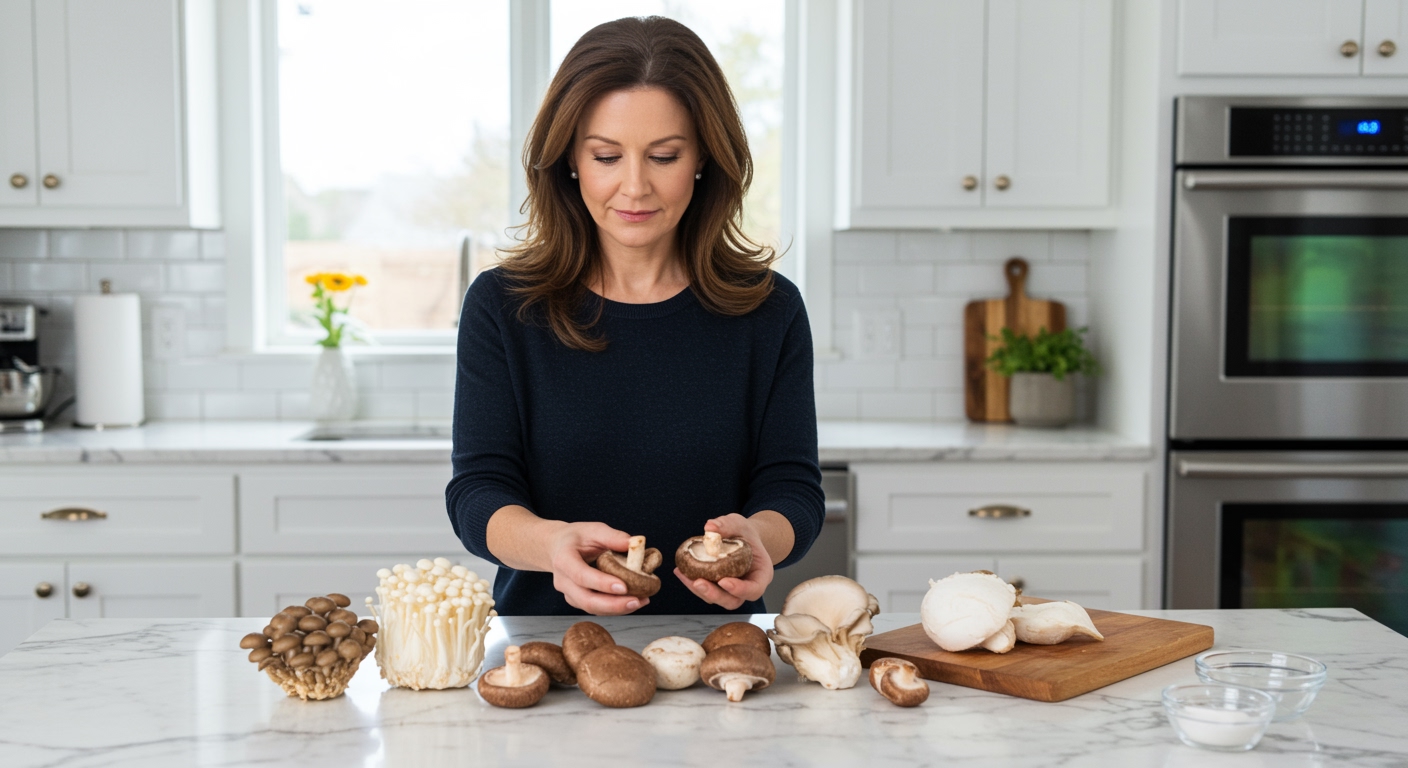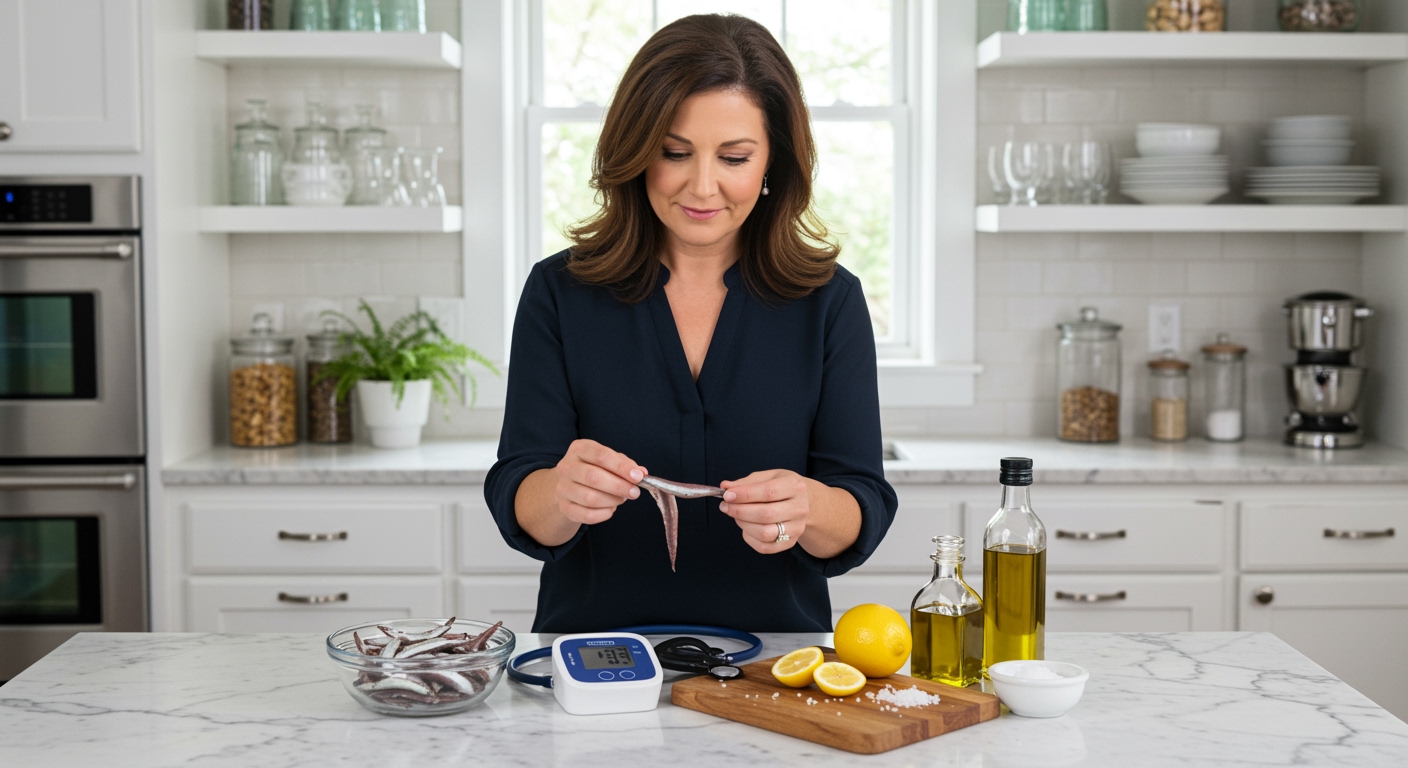✪ Key Takeaway: Most mushrooms can slightly lower blood pressure through potassium content, but psychedelic varieties may temporarily raise it.
Introduction
Your doctor just told you that your blood pressure readings are consistently low, and now you wonder if the mushrooms you love eating could make things worse.
Many people with hypotension worry about every food choice because they fear dropping their already low numbers even further.
Hi, I’m Abdur, your nutrition coach and today I’m going to explain exactly how different types of mushrooms affect your blood pressure levels and what this means for your health.
Do Regular Mushrooms Lower Blood Pressure?
Most culinary mushrooms contain high levels of potassium, which can cause a mild reduction in blood pressure readings.
A single cup of portobello mushrooms provides about 375 milligrams of potassium, while your body needs this mineral to help relax blood vessels and reduce strain on your cardiovascular system.
The sodium content in mushrooms remains extremely low, typically under 5 milligrams per cup, which creates an ideal ratio for blood pressure management.
However, the blood pressure lowering effect from mushrooms is quite gentle and gradual, unlike prescription medications that can cause dramatic drops.
Research shows that people who regularly consume mushrooms as part of a balanced diet experience modest improvements in their overall cardiovascular health markers.
✪ Pro Tip: Combine mushrooms with other potassium-rich foods like bananas and spinach for better blood pressure support.
What About Psychedelic Mushrooms and Blood Pressure?
Psilocybin mushrooms work completely differently than regular mushrooms and can actually increase blood pressure temporarily during use.
The psilocybin compound activates serotonin receptors in your brain, which triggers a cascade of physiological changes including elevated heart rate and blood pressure.
Studies indicate that blood pressure can rise by 10-20 points systolic during the acute phase of psilocybin effects, lasting anywhere from 4 to 6 hours.
This temporary increase happens because psilocybin causes your sympathetic nervous system to become more active, similar to what occurs during stress or excitement.
People with existing low blood pressure might actually experience more normal readings during psilocybin use, though this effect disappears as the compound leaves your system.
Medical researchers are studying whether controlled psilocybin therapy might help people with treatment-resistant depression, but cardiovascular effects remain a safety consideration.
✪ Note: Psilocybin mushrooms are illegal in most places and should never be used for blood pressure management.
Which Mushroom Varieties Are Best for Low Blood Pressure?
Shiitake mushrooms contain the highest potassium levels among common varieties, providing about 420 milligrams per cup when cooked.
These mushrooms also contain eritadenine, a unique compound that helps your liver process cholesterol more efficiently and supports overall heart health.
Oyster mushrooms offer excellent protein content along with their potassium, which helps maintain stable blood sugar levels that indirectly support healthy blood pressure.
Maitake mushrooms contain beta-glucans, special fibers that help reduce inflammation in your blood vessels and may provide modest blood pressure benefits.
Button mushrooms, while lower in potassium than other varieties, still contribute to your daily mineral intake without adding sodium or unhealthy fats.
✪ Fact: Dried mushrooms contain concentrated nutrients but also higher sodium levels from processing methods.
How Should People with Hypotension Eat Mushrooms?
If you have low blood pressure, you can safely enjoy moderate portions of mushrooms without worrying about dangerous drops in your readings.
Start with half-cup servings and monitor how you feel, since individual responses to potassium can vary based on your overall health status.
Combine mushrooms with foods that contain natural sodium, like celery or seaweed, to help balance the mineral content of your meals.
Cooking mushrooms with a small amount of sea salt can help offset their potassium effects while still keeping sodium intake reasonable.
Pay attention to your energy levels and any dizziness after eating large amounts of potassium-rich foods, including mushrooms.
Remember that the blood pressure effects from dietary changes happen gradually over weeks and months, not immediately after single meals.
✪ Pro Tip: Keep a food and symptom diary to track how different mushroom portions affect your daily energy levels.
The Bottom Line
Regular mushrooms provide gentle, beneficial effects for most people with low blood pressure through their natural potassium content and heart-healthy compounds.
Food should work with your body, not against it, and mushrooms are one of nature’s most cooperative allies for cardiovascular health.
I would love to hear about your experiences with mushrooms and blood pressure in the comments below, and please share any questions you might have about incorporating these nutritious fungi into your daily meals.
References
At NutritionCrown, we use quality and credible sources to ensure our content is accurate and trustworthy. Below are the sources referenced in creating this article:
- PMC: Mushrooms and Cardiovascular Health
- Cleveland Clinic: Benefits of Mushrooms
- UCLA Health: 7 Health Benefits of Mushrooms
- Asana Recovery: Do Shrooms Raise Blood Pressure





